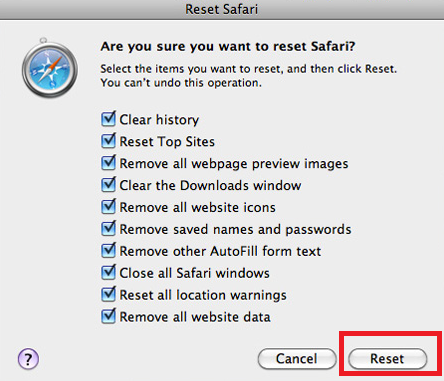Do not take any point on 1-844-413-7017 pop-up
Being slammed with 1-844-413-7017 pop-up, you may always be warned with a Hacking Alert message urging you to call the number provided for tech support. Do not be fooled when you get such a warning freezing up your screen and saying:"
WARNING - Microsoft windows has detected that a porn virus has infected your system. Call Toll Free 1-844-413-7017 immediately to rectify this issue."
Actually it is a phishing scam used to trick innocent computer users. Whatever you do, do not buy the "call for tech support" saying and never contact 1-844-413-7017. You will be charged for multiple hundreds of US dollars. You won’t enjoying wasting your money and you time.
It is time to get rid of 1-844-413-7017 pop-up
The malware that displays "Call 1-844-413-7017" pop-ups and ads on your computer deserves to be dead because its habit of installing a component and tracking your web use. It is true that malware comes in many shapes and sizes, whether a programmer is corrupting your data or installing a keystroke logger on your computer so it can collect the information you input into your keyboard. Whether the control behind the malware are trying to hack your bank account or steal your information, or simply using underhand tactics to drive traffic and leads to their websites, there will be real negative effect on your computer's performance.
As for effective scam removal, you could try the following plans.
Plan C: Remove 1-844-413-7017 Pop-up Manually from Win/Mac OS
Plan A: Remove 1-844-413-7017 Pop-up Automatically from Your Win OS
| *** SpyHunter by Enigma Software Group LLC is a spyware detection & removal tool that provides rigorous protection against the latest spyware threats including malware, trojans, rootkits & malicious software. *** This program certified by West Coast Labs’ Checkmark Certification System will walk you through how to protect the computer from malicious threats with limited interaction. |
Step 1. Click to download malware removal tool SpyHunter and get it installed
Step 2. Run SpyHunter to scan for this browser hijacker Click "Start New Scan" button to scan your computer

Step 3. Get rid of all detected items by clicking "Fix Threats" button
Plan B: Clean up 1-844-413-7017 Ad Automatically from Your Mac with MacKeeper
| *** MacKeeper - a choice of millions can help protect and maintain you system with features such as Mac Security, Data Control, Cleaning, Optimization.
*** With its Geek on Demand feature, you could contact an operator for asking technical related questions or troubleshooting other problems which are not directly related to Mackeeper. |
Step 1. Download MacKeeper to your Mac.
Step 2. After activating this suite, you could enable Internet Security and anti-theft features to deal with the target malware.

Step 3. Scan your Mac and fix the issue.

After fixing the hijacking issue, you could clean up and maintain you system other features of MacKeeper. With its Geek on Demand feature, if necessary, you could contact an operator for asking technical related questions or troubleshooting other problems which are not directly related to Mackeeper.

Plan C: Remove 1-844-413-7017 Scam Manually
Step 1. End malicious processed generated by this non-sense
On Windows Computer: Press key combination (Ctrl+Alt+Del) to launch Task Manager

On Mac OS:
Choose Force Quit from the Apple menu, or press key combination (Command + Option + Esc) to open the Force Quit Applications window to do this.

Step 2. Uninstall unwanted/suspicious application that bundled with this 1-844-413-7017
On Windows Computer:
Win 7: Go to the “Start” menu, select “Control Panel”. Locate “Programs”. If there is anything related to 1-844-413-7017 program that might be bundled with this 1-844-413-7017 ad generator on the list of your Programs, then select it and uninstall it.

Win 8:
Right-click in the screen’s bottom-left corner and choose the Control Panel, and then choose Uninstall or change a Program from the Programs category. Uninstall 1-844-413-7017 scam related program if you can find any.

Win 10:
Go to the “Start” menu, select “Settings” and then “System”; Click on “Apps & features”, if there is anything suspicious, select and uninstall it.

On Mac:
Open the Applications folder in the Finder (or go to the Menu Bar, open the “Go” menu, and select Applications in the list), search for Suspicious application, and then drag it to the Trash (in the dock)

Step 3. Reset your affected browsers one by one
Google Chrome:
Click the Chrome menu on the browser toolbar and select Settings:
a) Scroll down to the bottom of chrome://settings/ page and click Show advanced settings
b) Scroll down to the bottom once again and click Reset Settings

Internet Explorer:
a) Click Start, click Run, in the opened window type "inetcpl.cpl".
b) Click "Advanced" tab, then click Reset.

Mozilla FireFox:
Open Firefox->> choose Help ->>choose Troubleshooting information
a) Click on Reset Firefox. Choose Reset Firefox again to make sure that you want to reset the browser to its initial state.
b) Click Finish button when you get the Import Complete window.

Safari
a) Open your Safari browser from the dock.
b) Click on Safari in your Safari menu at the top of your screen.
c) A drop-down menu will now appear. Choose the option labeled “Reset Safari…”

Step 4. Locate junk files and then delete them On PC: find and delete associated files from C Drive
%ProgramData%\*. %CommonProgramFiles%\ComObjects*.exe %windir%\SeviceProfiles\LocalService\AppData\Local\Temp\random.tlb
On Mac: a) Access hidden Library folder by hold down the Option key while looking at the Go menu in Finder.

b) Delete related files. You need to check numerous system folders for obscure files such as:
/System/Library/Frameworks/v.framework /System/Library/Frameworks/VSearch.framework /Library/PrivilegedHelperTools/Jack /Library/InputManagers/CTLoader/ ~/Library/Internet Plug-Ins/TroviNPAPIPlugin.plugin /Applications/SearchProtect.app /Applications/InstallMac
Specially Remind:
Anything taking a hand in your browsing and messing up things like 1-844-413-7017 pop-up should be eliminated in a timely fashion. If you are puzzled by the manual removal steps, you could feel free to get assistance with SpyHunter (For Win OS) or MacKeeper (For Mac).



No comments:
Post a Comment